




MAH JONGG
The allure of Mah Jongg is sensuous, social and intellectual. The feel and sound of the tiles clicking against one another is part of the physical experience of play. The game is fast growing at the Club at Gateway and what started out as a small group, is now turning into a weekly game.
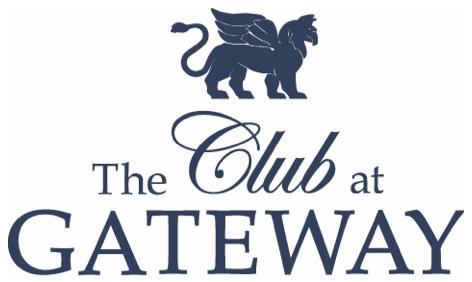

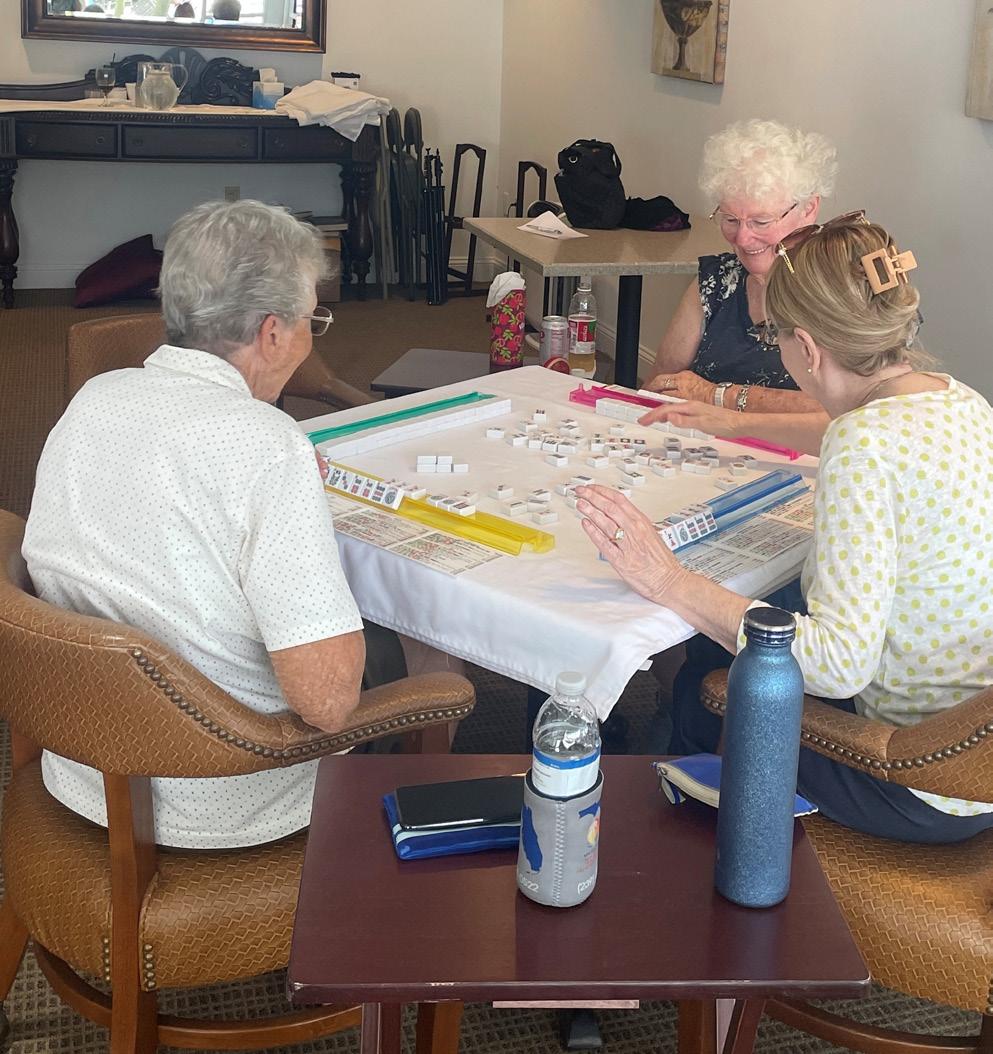


Production Directors
Stephen Miller
Elizabeth Miller
Sales Department
Tom English
Margo Williams
Laura Berrio
Bret McCormick
Miranda Ledbeter
Alyssa Debban
Justein Matthias
Anissa Stender
Webmaster
Selina Koehler
Production Manager
Lee Nostrant
Production Department
Elaine Donholt
Ruth Nekoranec
Katie Heystek
Dianne Strout
Karen Kalisz
Michelle Feeney
Andie Reynolds

Director of Golf at The Club at Gateway

We have enjoyed successful participation in all the events this season! All levels of golfers have competed in competitive rounds at the club. With the summer approaching we hope to continue this trend for all of our summer events. Tuesday Men’s Day and Thursday Ladies’ Day will continue throughout the summer. We will also be hosting Memorial Day, 4th of July, and Labor Day events throughout the summer months. PGA Pass will allow you to play six times at the club as a guest in the summer months. We hope you take this opportunity to experience what a beautiful facility Gateway has to offer!
Congratulations to all the winners of our major events in March!
2025 Gold Men’s Invitational Champions - Robert Staffan and Steve Staffan
2025 Net Jack and Jill Champions - David McIlroy / Ilse
Pfander / Sheila McAllister / Vicki Schmelz
2025 Gross Jack and Jill Champions - Robert Wilson / Dee Hartlieb / Karen Johnson / Bonnie Mathewson
2025 Mixed Couples Club Champions - Overall Net Winners
|Derek Rasmussen and Camri Rasmussen
Seabreeze Communications, Inc. does not endorse any advertising as it relates to the communities. Advertising is not screened by Seabreeze Communications, Inc.
All rights reserved. Reproduction or utilization of these contents in any form by any electronic, mechanical, or other means, including xerography and photocopying is forbidden without the written permission of the Publisher.
The Publisher is not responsible or liable for misinformation or misprints herein contained and reserves the right to accept or reject all copy deemed unsuitable for publication.
2025 Mixed Couples Club Champions - Overall Gross Winners
|Bill Chapman and Julie Freitag
The Performance Center is available for all your club fitting and teaching needs. We will always discount the fitting fee off your club purchase when we fit at the club so set up a fitting anytime and let myself and Michael get you fit into the right clubs for you!

Swing the club, don’t hit the ball! Think about your target, not hitting the ball!
One of the most important parts of golf is focusing on your target and visualizing the shot you want to hit. After you pick your target, always make your practice

swing the same as you want to make when you stand over the shot. (We call this a Practice/ Rehearsal swing) This applies to all parts of the game: driving, fairway woods, irons, chipping and putting.
Having a consistent pre-shot routine will help to focus your mind on each shot, one at a time. Practicing this routine on the range is very important until it comes second nature for you.
If you would like to learn more information about this routine please sign up for lessons anytime on Foretees or contact Gyles Robin, Director of Golf: golfpro@gatewaygcc.com or Michael Dodson, Head Golf Professional: golfshop@gatewaygcc.com .
The importance of engaging your core…..What does it even mean?
Have you ever heard a trainer or group exercise instructor say “engage your core” or “tighten your abs”? Some might cue you to pull your navel to your spine. These are all ways to remind you to tighten your abdominal muscles while performing certain exercises so you can reap the most benefit from the moves as well as reduce your risk of injury. But how do you do it? What does it even mean?



Why do you want to engage your core? Engaging your core during your workout helps reduce the risk of injury, especially injuries of the lower back. For example, think about completing shoulder presses. As your shoulders get tired you may start arching your lower back which puts a dangerous strain on your spine and the muscles around it. By zipping up your abs and squeezing your glutes, your spine is more protected and you can move your shoulders through a safer range of motion.
First, a quick look at what makes up your abdominal muscles (abs) which are a big part of your core. Everyone has four layers of abs. The deepest layer is called the transverse abdominis (TVA). The TVA wraps around your waist to connect the ribcage to the pelvis. On top of the TVA are the internal and
external obliques which crisscross your torso. Last but not least, the top layer is your rectus abdominis which are the muscles that form that oftendiscussed six-pack. When all four of these ab muscles are braced together, working with the muscles that line your spine, you have what is called an engaged core. Keep in mind, your core also includes your glute muscles and adductor muscles in your hips along with your lower back and abs.
Also, engaging your core when performing abdominal exercises especially, ensures your abs are doing the work instead of recruiting other muscles to take over. This will make those moves more effective. Since your core is the basis of almost every movement we make in our day to day lives, it is important to keep it strong.
So how do you engage your core? Your abs should be tight and pulling in, but you should be able to breathe and move normally. It is NOT sucking in your stomach and holding your breath. You can practice engaging your core at any time by feeling your ribs expand to the sides while you inhale, then as you exhale contract and zip up your abs, thinking about pulling your navel up and in toward your spine. Keep breathing normally while you continue to hold your abs in.
Keeping your core engaged properly while exercising will help keep your core strong and reduce your risk of injury not only while working out, but also in your day to day activities.

You can do some core exercises on a carpeted floor or mat, but using a stability ball or bosu ball allows that transverse abdominis muscle to activate which is one of the most effective ways to strengthen your core muscles. Feel free to stop by the fitness center and ask for tips on the best core exercises.


Travis Raque Director of Racquets at The Club at Gateway
A racquet sports study shows a possible link to longevity!
If you want to increase your health span and lifespan, it’s time to hit the courts. So, if you’ve been thinking about joining the pickleball craze or finally getting back on the tennis court, consider this your sign to hit the courts this spring.


There’s some pretty strong evidence that racquet sports, from tennis to pickleball, can increase your longevity.
Around the time of last year’s US Open, a 2018 study resurfaced on social media. This study showed researchers observed 8,577 Danish residents aged 29 to 93 from 1991 to 2017. They found that those who regularly played tennis lived an average of 10 years longer than their sedentary counterparts. There are, of course, some limitations to this study, but this has prompted many more studies on the subject. Since then, many more have come out, expounding the fact that tennis and pickleball not only improve your longevity but also help fight off many diseases, including Alzheimer’s.
So, here is your tip of the month: Get off your couch, and stop watching Emily in Paris or Reacher. Get outside and enjoy some fresh air and a little vitamin D, and get moving. Stay healthy, and I hope to see you at the courts…
We enjoyed a talk about climate change and invasive species. After going through the Nature Center, we took a 40-minute docent-led boat ride on the Gordon River. We also enjoyed a late lunch at Spanky’s before heading home.







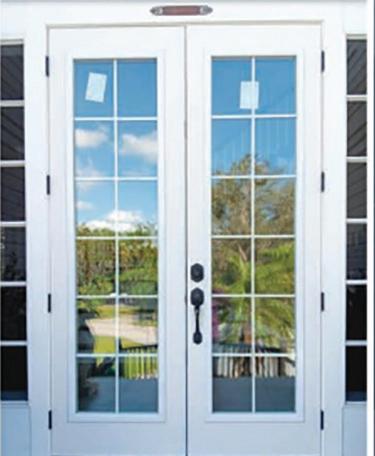




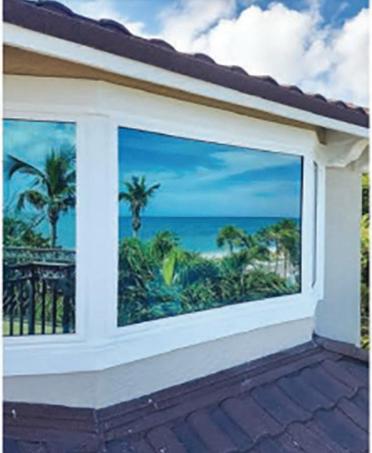








JANICE EATON, LAUREL BORGIA, MARIANNE KOLLASCH AND DONNA MARCHETTI
GEORGE LAMAN SPOKE AT GATEWAY WOMEN’S CLUB
ABOUT LIFESAVING CPR AND AED BILLS USAGE IN SCHOOLS
STEPHANIE MENA

What started out as a typical day in the life of a healthy, active, 18-year-old high school student, ended in sudden death. Lauren was at her regular drill team practice when she suffered from sudden cardiac arrest – a preventable death. Her life could have been saved with the proper use of an AED unit. Automated External Defibrillators are small portable medical devices that analyze a person’s heart rhythm and deliver an electric shock to restore a normal heartbeat. Coupled with CPR efforts, this unit literally talks the user through the steps to follow. No medical training or license is required. The results are lifesaving. The cost of the units is manageable.

George Laman is a retired firefighter, paramedic, and heart transplant survivor who lost his daughter in high school because no one knew how to use an AED. In 2014 he worked to pass Lauren’s Law in Illinois, requiring high schools to train students in CPR and the use of an AED. Passing Lauren Laman Law in Illinois has resulted in numerous lives saved


at school, home and in public places. Now he is working on passing a law in Florida requiring 9th and 11th graders to take CPR training and learn how to use an AED.
Laman is the author of A Father’s Promise: Love, Loss and the Power to Change, available in bookstores everywhere. He served in the U.S. Navy and
spent 40 years with the fire service in Schaumburg, Illinois as a fire lieutenant, paramedic, and fire plan examiner. Now as a full-time Florida resident he is focused on passing Senate Bill 104 Cardiac Emergencies and House Bill 337 Cardiac Emergencies on School Grounds. These bills will require CPR and AED equipment training in Florida schools. They save lives.
Cardiac episodes can happen to anyone. Time is essential. With proper equipment and training, students can take immediate action. When the paramedics arrive, they are able

take the next medical step. House Bill 337 Cardiac Emergencies on School Grounds and Senate Bill 104 Cardiac Emergencies will require CPR and AED equipment and training in Florida high schools. Laman encourages every voter to contact their representative and ask for support on these bills. In the House of Representatives, the bill is HB 337 –Cardiac Emergencies on School Grounds. The contact person is Representative Debbie Mayfield (R) District 32. Phone (850) 717-5032 or e-mail: debbie. mayfield@flhouse.gov.
In the Senate, the bill is SB 430 – Cardiac Emergencies. The contact person is Senator Corey Simon (R) District 3. Phone (850) 487-5003 or e-mail: simon.corey.web@flsenate.gov.
At the end of the GWC meeting, Laman supervised hands-on training showing how to add ICE (In case of Emergency) notifications to iPhone or Android phones.
JAN HARTZELL
The GWC Book Club will meet on May 13 at 7 p.m. to discuss the novel The Shop on Blossom Street by Debbie Macomber. We will gather at our hostess Penny Messerknecht’s home. Kathy Mullane will be the co-hostess, while Patti Whetstone will lead our discussion. This novel is about a newly opened
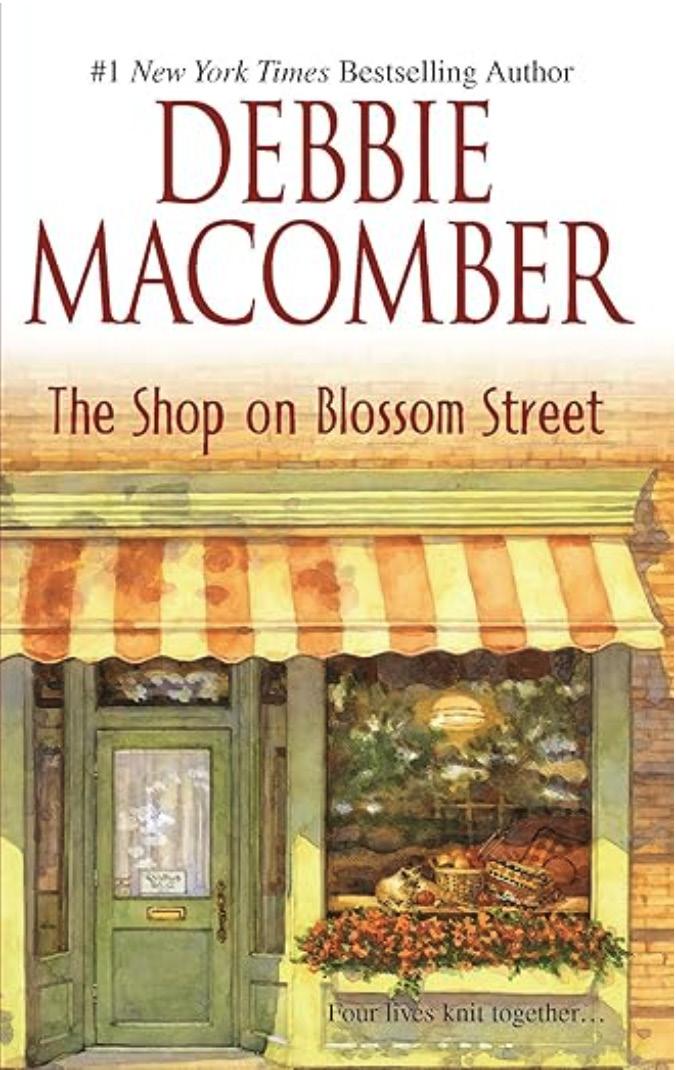

Seattle yarn shop and the knitting class that brings four women together to make baby blankets. The owner of the shop and her three students produce more than blankets, knitting together bonds of solidarity, friendship, love, hope, and renewal. Please refer to your GWC Directory for Penny’s address and notify her if you plan to attend by May 10.

KATHY FLAHERTY
On Wednesday, March 26 the following group toured the Randell Research Center in Bokeelia: Lois Hyatt, Robin Connolly, Sharon Jones, Mary Mills, Cleta Alix, Sharyl Tutela, Mary
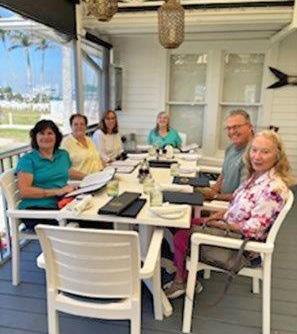

Anderson, Kathy and Jeff Fabisiak, Judy and Bob Jones, Mireya Rossi and Kathy Flaherty. Their docent was Dawn.
The group first had a wonderful lunch at the Tarpon Lodge Restaurant, which is across the street from the research center. The menu included a variety of delicious entrees.

Their docent was knowledgeable about the Calusa tribe and this archeological site. She took us along the Heritage Trail to the mounds made from shells. We saw the Smith Mound and the Brown’s Mound. The Smith Mound was the burial mound and has the remains of a Calusa tribe member there. There were the mounds where the Calusas built their houses. On the way to the Smith Mound, the participants saw the intricate canal system that the Calusas built. The docent informed the group that these people were very tall and
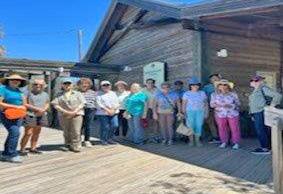

the males painted their bodies. In the museum, there was a skull of a Calusa man and woman. The members could tell they were very good-looking. They could see the many tools that they made. Everyone enjoyed this educational tour of the Randell Research Center.
Bridge 101 will meet May 6 and 20 at Hampton Park Amenity Center at 10 a.m. There is no fee. Anyone who wants to learn or enjoys playing bridge is welcome. The ladies are a low-key, fun-loving group!
Contact Susie Kravetz (her information is in the directory). Email or call her if you plan to attend. She must give your name to the gate.



The next Sit and Stitch meeting will be hosted by Glenda Ziegler on May 12 at 1 p.m. Please contact Glenda if you plan to attend. Her information can be found in the GWC Directory. The group includes many GWC members working on different projects. The members are still working on projects for hospice and scarves for collegeattending students who were in foster care. Any GWC member is welcome to join.

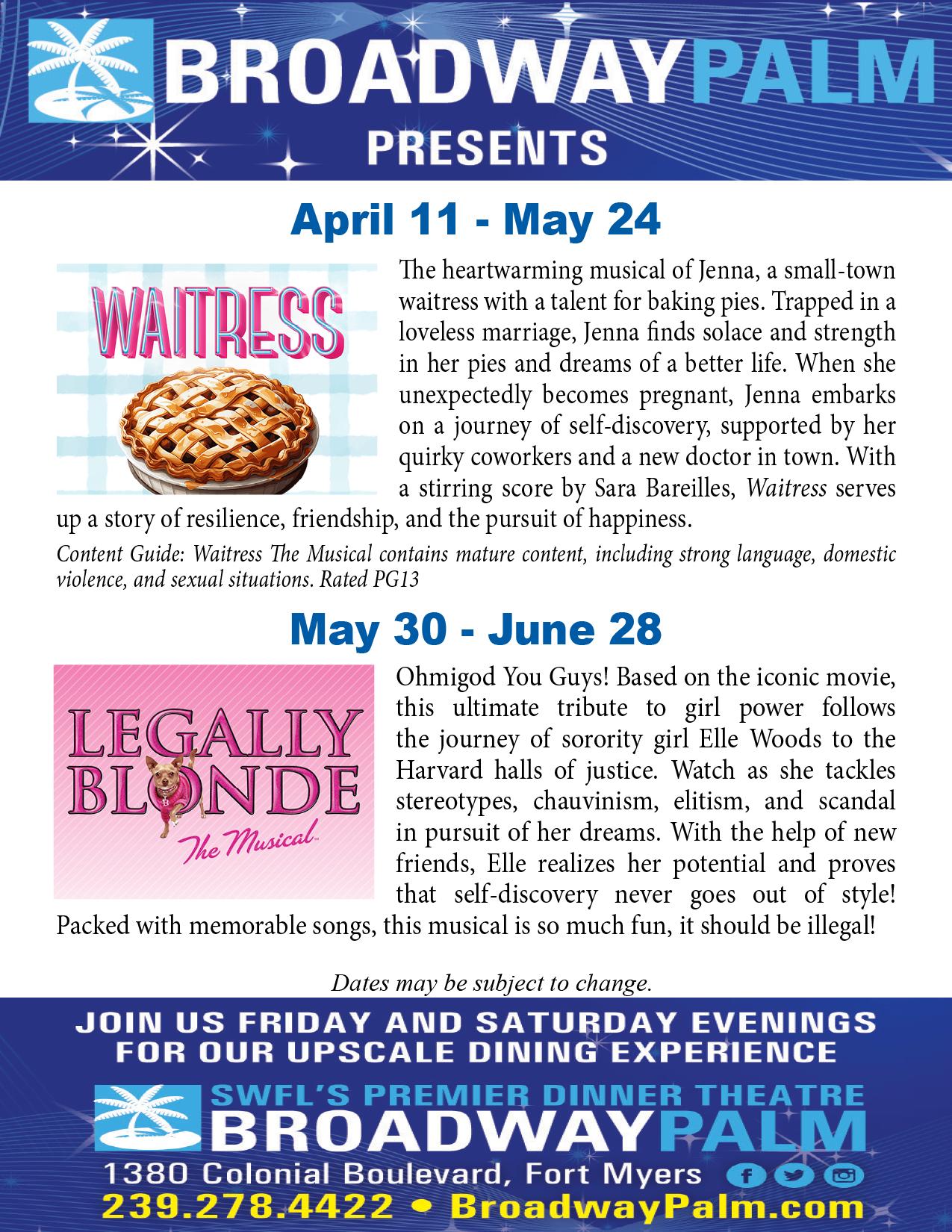
On March 11 the Gateway Women’s Club Gateway Gals on the Go group was able to reschedule their Bocce event due to rain on the original day February 25. The temperature was a cool 55 degrees but

... MICHELLE KAREN, SHARON DESROSIER, MARY DESILVA, VALERIE EMERSON, BOBBI KINKADE, SANDY SCHWARTZ

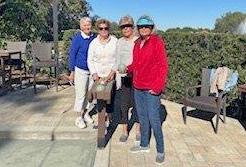
ANN DYNIEWICZ, GINNY ALUSKEWICZ, JO IWANSKI, JANET GEORGE

KATHY MULLANE, RENETTE OKLEWICZ, DEBRA GLANCY, STEPHANIE MENA

quickly warmed up while they played. To accommodate the large numbers of signups, there were two sessions, one at 9:15 a.m. and the other at 10:15 a.m. Mary Desilva did the registration and set up the teams. The referees and sign holders were Michelle Karnes, Sandy Schwartz, and Sharon Desrosiers. All had a great time plus some stayed for lunch at the club.


SUSIE KRAVETZ, VALERIE EMERSON, STEPHANIE MENA, BOBBI KINKADE

ELSIE RIVARD
Fifteen GWC ladies went blueberry picking recently at the Blueberry Bunch Farm near LaBelle. It was a perfect sunny morning to be out in rural Southwest Florida. Although the picking season was three weeks late due to the weather, there were still berries to pick. The participants just had to hunt for them. The blueberries seemed sweeter than those of previous years. Good news: No bugs and
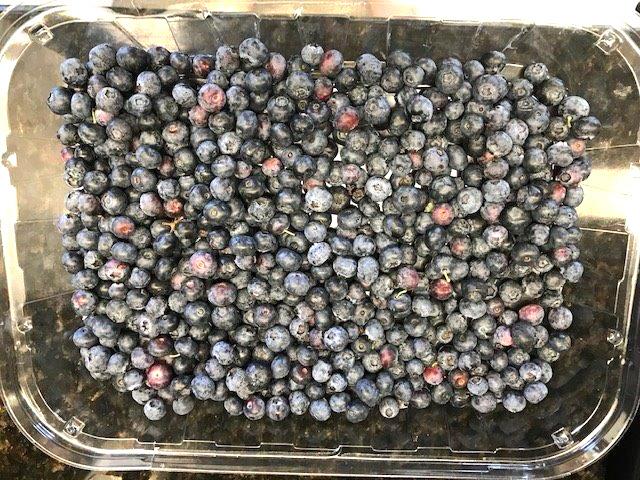



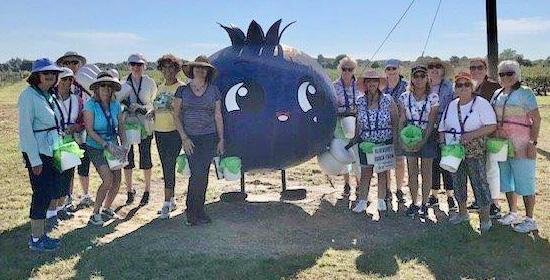
no snakes were encountered in the blueberry fields!
After an hour or so of picking, the group headed to the LaBelle Brewing Company to continue their socializing. Their waitress was wonderful, and the food was very tasty. The ladies decided that they would be interested in blueberry picking next year and liked the LaBelle Brewing Company!
You may be wondering what they will do with all the blueberries they picked. As for this writer’s blueberries, some will remain as fresh fruit, some will be frozen, muffins, blueberry crisp, and preserves!! Overheard was one family talking about making smoothies! (Look for the recipe shared in the earlier announcement of the blueberry picking event. Feel free to share more recipes, too.)
Special thanks to our carpool drivers: Michelle Karnes, Mary DeSilva, Linda Birkheimer, and Elsie Rivard.
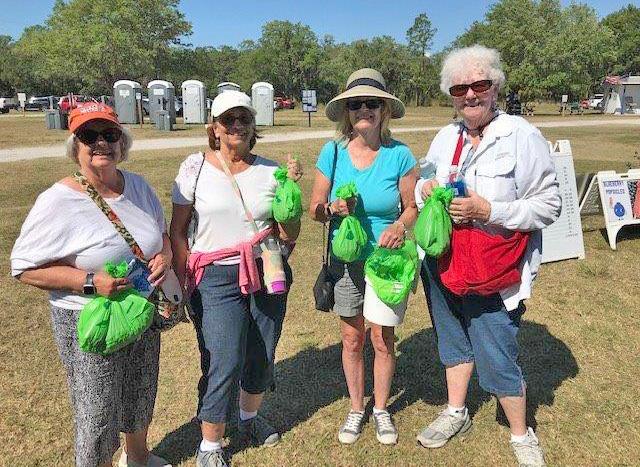
Gateway Women’s Club provides many opportunities for members to engage in a variety of fun activities and to connect with others, sharing similar interests. One such opportunity is the Dining Out group’s monthly adventures to local restaurants, where members, spouses, and guests gather to celebrate friendships and good times around the dinner table.
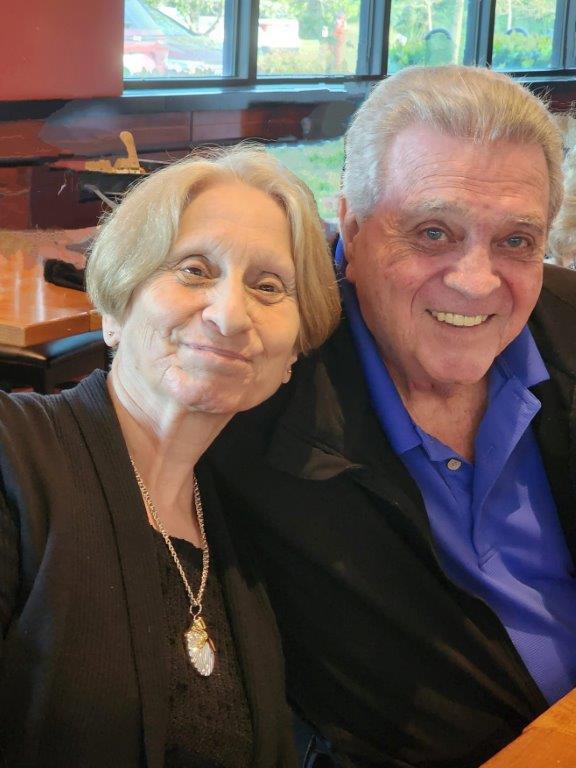
Enjoying a night out with friends is the perfect escape to daily routines. A recent outing to BJ’s Restaurant at Gulf Coast Town Center was one of those welcomed getaways for GWC members and guests. Offering high quality ingredients and savory flavors, BJ’s menu, as advertised, “offers something for everyone to love.” The GWC diners enjoyed entree choices from burgers





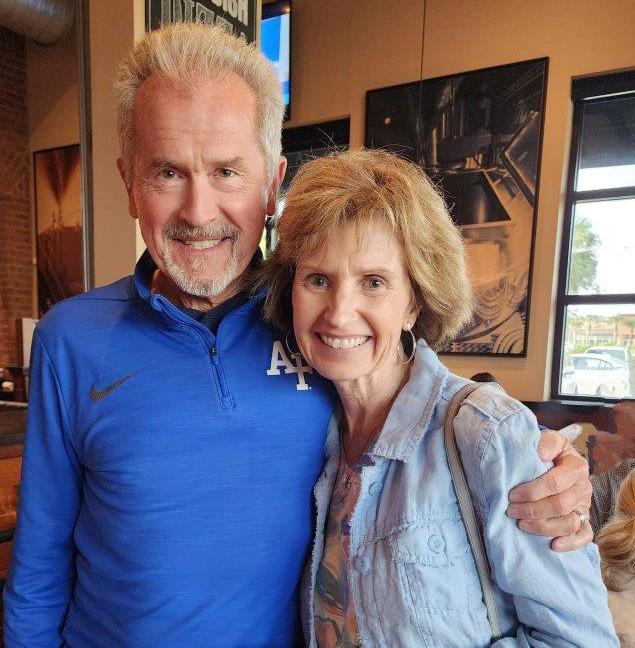


to beef, salads to salmon, pizzas, lighter fare options, and of course their famous Pizookie desserts.
The GWC dining experience, however, is more than just the food. As is often said, it’s the company, not the food, that makes the meal. Long after the food and dishes have been cleared, friends linger at the tables with lively chatter. The world’s problems may not be solved, but sometimes the conversations lift our souls a little higher.



Membership in Gateway Women’s Club is open to any woman residing in a Gateway community neighborhood, whether a full-time or seasonal resident. Gateway Women’s Club is not affiliated with the Club at Gateway and applicants do not need to be a member of the club to join Gateway Women’s Club. For more information or to obtain an application to join Gateway Women’s Club, please contact Susan Roberts, GWC Membership Chair, at skroberts77@yahoo.com.

A section dedicated to providing Gateway Greens residents with updates about current and relevant topics within our community.
“The Spot” will provide newsworthy community information, advance notice and status updates about projects around our neighborhoods that will keep you “in the know”! While the content is most relevant to Gateway Greens homeowners, we welcome all Gateway area residents to learn more about us, and what’s happening in our community.
Given the sizeable number of residents across more than 1,400 homes and the number of updates and information that needs to be shared, the Gateway Greens Community Association is focused on driving informational content to our
Whether you’re new to Homeowners Association (HOA) living or simply new to the Gateway Greens (GG) community HOA, it’s often confusing on where to find out what to do or who to contact about a variety of topics. A recent update to the Gateway Greens owner’s portal makes it easier than before to find what you need! Simply access and sign-in to the portal through the https://gatewaygreens.com or https://alliantproperty.com/homeownerportal-access) websites.
residents beyond email into additional communications platforms. We encourage residents to engage with us with questions and feedback.
“The Spot” will be featured regularly in Lifestyle Magazine , with additional messaging highlighted on our upcoming Comcast Community Channel and HOA email updates. Topics will include Board and Committee news, updates on improvement projects like landscaping and roadways, and departmental updates from areas like Gate/ Access Control and Alliant Property Management. We are excited to bring you timely and relevant news, and look forward to connecting more with you in the months to come!

One of the most important pieces of information is listed on the first page of the portal: the “Frequently Asked
Questions” (FQA) Link. A range of topics are included that will answer your questions about property improvements, pet policy, association dues, how the association is managed, who to contact for water and sewer related issues and leasing your home –just to name a few!
Homeowners might also want to understand how to register a golf cart or who to contact to replace or transfer a car transponder for easy access into our gated community.
Within HOA communities, mention the words “governing documents” or “rules and regulations” and most people would run for the hills. Did you know that in Indiana, it’s illegal to drive a horse above 10 MPH, while in Colorado it’s illegal to keep a couch on your porch and in California it’s illegal to whistle for a lost canary before 7 a.m.? The Gateway Greens governing documents developed nearly 30 years ago didn’t have that degree of absurdity within them, but they did not reflect current times and needed to be updated.
The GGCA Board of Directors recognized that things needed to change but also knew that they needed to understand what issues the majority of homeowners wanted to address. For example, what do they
Or if you are thinking about any exterior improvements to your home or property, the Design Review Manual and Application is one of many forms you can find in the portal. If you are interested in the HOA budget and financials – just sign in and read through this public information.
If you do not have access to the portal email lorey@alliantproperty.com or call (239) 4541101, Alliant Management. We encourage you to check it out and provide your feedback!
want their community to look like, how safe do they want their community to be, and what elements are most important to maintain and improve property values?
Two Town Hall meetings and a series of communications highlighting the proposed changes were implemented over the course of several months so that the voices of the homeowners could be heard. A big “thank you” to those who engaged and provided feedback over the last few months! After multiple iterations, the new Governing Documents were passed with a significant majority of homeowner participation.
With the passage of the new Covenants, the Board will begin to address a variety of changes to improve homeowner satisfaction, including simplifying the Design Review Manual and moderating some of the Fining Policies.
Spring is here, and that means Spring Cleaning Season is upon us! What better way to kick off this season of renewal than to give our Gateway Greens common areas a refreshing facelift. We have several key projects in place that will boost our curb appeal and add value to our homeowners.
First, we are introducing a new landscape vendor for all our common areas across the community. With the expiration of our current landscaping contract the end of April, after securing competitive bids from several commercial landscaping companies, we are moving forward with the most cost-effective bid. Greatview Lawn Care will replace our current landscape vendor starting in May. We are excited to implement the changes and improvements planned with the start of this new partnership and want to share some details with you:







- We will convert from pine straw to mulch for all common area landscape beds, tree rings and monuments
- All loose pine straw and other accumulation will be removed from the current areas to give us a fresh start
- Coco cedar mulch will be applied twice per year during May and November
- Greatview is already working with some of our sub-associations, and the quality of their work is exceptional!
It’s also time to repaint and repair our exterior and interior walls, gatehouses, and monuments at the entrances to our neighborhoods. Starting May 1, our painting vendor will begin to update these common areas to deliver a refreshed and clean new look. The project will begin next month across Gateway Greens and will bring a much-needed improvement to our community.
Over the next months, the community will embark on additional projects including pressure washing of pavers at all entrances to our community and some road resurfacing to keep up our curb appeal. Stay tuned for future details!
NEW WALLS, MONUMENTS AND GUARDHOUSE WILL BE REPAIRED, CLEANED AND PAINTED IN A COMMON THEME.
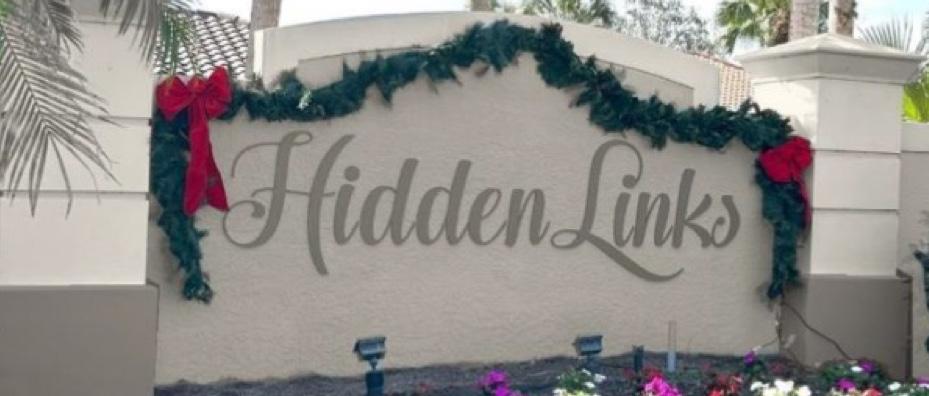




DR. MARK P. GONZALES, EXECUTIVE DIRECTOR, ROYAL PALM ASSOCIATION OF CHURCHES, SBC
Growing up in central Texas, we saw very little snow and ice. There was the blizzard of ’64. Almost 2 inches. That was huge for us as kids! What did we know? Not enough to make a snowman for sure, but we were happy that it was enough for snowball fights and making a few snow snakes!
We also didn’t know much about winter ice, though we heard some crazy stories about how people up North could actually skate on frozen lakes—LAKES! How does that work? How do you know if the ice is thick enough to hold your weight? Is it enough to just conjure up enough faith before you get out there? Quick answer: Not if it’s early winter. That ice is far too thin. It doesn’t matter how much emotionally based inner assurance you muster up to try and believe it will hold your weight. It won’t. You will get very wet and very cold.
Ah, but if you do the same thing in midwinter, then the ice will hold you up. But it won’t be because of your seemingly great faith. It will be because of the facts of winter ice and timing, and probably by the wise steps of checking with the local park ranger or safety notices before you lace up.
In short, emotionally based faith can feel trustworthy, but it isn’t. It is unreliable. It is unpredictable. It is self-deceptive. In fact, it can be downright dangerous. And yet, that is what many people think faith is. Some kind of inner assurance that will trump the facts or realities of this life and

the next. But that would be thin ice faith. You’ve heard it:
“You can do anything you want and make your dreams come true—you just gotta BELIEVE!” (Okay, true for ONE out of 64 basketball teams or 128 tennis players that win the championship, right? But what about everybody else?)
“It doesn’t matter what you believe, as long as you’re sincere.” I know that sounds good and feels good, but it is not good. We can be sincerely wrong. And people get hurt.
Biblical faith is very different. Hebrews 11 tells us: “Faith is the reality of things hoped for,” not the fantasy of things hoped for. It also says: “Without faith, it is impossible to please God.”
So, what does this look like in real life? Well, here’s what I’ve been learning over the years. There were times when I
really felt, sensed, and believed that God was about to do some very specific and special things in our lives. I thought I was building my faith life to trust Him to do the things my heart was set on.
I’m guessing that you have as well. Maybe regarding a promotion, or a new job, engagement, or pregnancy, or windfall, or healing, or “Yes” answers to prayers that you’ve been praying for a long, long time.
Did God deliver for me? Well, sometimes yes. But sometimes no. Hmmm. Maybe my faith wasn’t strong enough when things didn’t go like I hoped. Maybe I just needed to work on having a “great faith in God!” But that didn’t work either. So, after a few years of that roller coaster ride of well-intentioned faith, a deeper truth began to emerge.
“Hey, wait a minute. I’ve been trying to muster up great faith in what I thought God was going to do—my projections—my hopes— my dreams.” And when some of them didn’t happen, I blamed God! I thought He was messing with me. Holding out on me. Cheating me. But it was my projections that were often wrong. That’s when I heard this whisper from above in my heart:
“Son, the faith that pleases Me is the faith you have in Me, not in your projections.”
Oh. Wow. My projections were the thin ice where I focused my faith, rather than focusing my faith on the love, wisdom, character,
goodness, and heart of God Himself—“the reality of things hoped for.”
It’s not about “having a great faith in God.”
It’s about “having faith in a great God!”
In fact, He said all we needed was faith about the size of a tiny mustard seed. He will take care of the rest, even if we don’t understand it at the time.
This is where we find the deepest kind of peace, joy, and rest, my friends. Why? Because we can pray for anything we like at any time and always know that however those prayers – not our projections – are answered by our God of the Ages, they will always, ALWAYS, be the best possible answers for our lives.
Even when He says “No,” like a loving parent says to their beloved child who wants to play with bright and shiny razor blades, right?
The Father knows best. I like it that way. I trust Him. That pleases Him. I believe that.
Faith is “acting on what we say we believe— everything else is just religious talk.” So there it is! Trust God’s heart, my friends. Skate on!
Trusting His “Yes” and “No” with you, Pastor Mark (mark@quillpress.org)
Articles, videos and podcasts: markpg.org. Write and share at mark@quillpress.org. Hear me every Saturday, 8 a.m. on 91.5 FM.

G G G
Domestic utensils
Nil 23. The business of selling goods
Dictatorial
Once, long ago
Deer meat
Trainee
Consented
Book of instructions
Not idle
Thin
United Kingdom
L L L L
Primitive weapon
Mineral excavator
Eyeglasses

Fuse
Expend DOWN
Dull
Timber wolf
Sloth
Trawling equipment
Woody plants
Robber
Colony of rabbits
Inability to remember
T T T
Reseda
Notions
Requires
School assignment
Tropical root
Curved molding
Consumed
Distinctive flair
Ripple
Italian bowling
Shade trees
Genuine 27. Rational
Shortening
Red 32. Low point
Found on rotary phones
Wicked
Lairs
Violent disorder
Sidelined 43. Type of truck engine
Condition
Prison-related
Surplus 49. Goes ballistic
Display 52. Obscene term for feces 53. Not early
Not odd 55. Dispatch
CAPT. BILL RUSSELL
May is a month with warm weather, calm seas, and the potential for good fishing. The month brings a host of choices for anglers of all skill levels.
This is the time of year that gives anglers the best opportunity to hook into a tarpon, as they move into Southwest Florida waters by the thousands. Look for them a short distance off the beaches, around the Gulf Passes, bridges, plus throughout the inshore waters. Tarpons’ diet includes a variety of baits, however at times they will not eat anything you offer. Live baits including crabs, Atlantic thread herring, pinfish, and large shrimp are top choices and cut bait fished on bottom, including mullet, ladyfish, and catfish tails are tarpon favorites.
Sharks of all sizes roam the inshore waters, around the Gulf Passes, and offshore around schooling baitfish and reefs. Large hammerhead and bull sharks follow tarpon schools awaiting their next meal. Spinner and blacktip sharks are almost identical in appearance, and both offer an incredibly hard fight, often with a great aerial show. If you are fishing an area and hooking ladyfish or mackerel, you can be assured sharks are nearby. A chunk of ladyfish is sure to get attention, use a minimum of a foot or two of wire leader to prevent cutoffs.
Spanish mackerel is an underrated fish that gives an excellent fight as they are super-fast and strong. If iced down as soon as they are caught and eaten fresh, they are very good on the table. Good numbers of schooling mackerel frequent areas just outside or inside the Gulf Passes, around bridges, and artificial reefs within sight of land. Either trolling or casting silver spoons with a fast retrieve is the top method for consistently hooking mackerel. A short trace of light wire leader reduces cutoffs from their razor-sharp teeth.
Mangrove snapper is one of our tastiest fish and at times the most abundant. As waters warm, snapper in the Gulf of Mexico move closer to shore, plus many relocate to our inshore waters. What snapper lack in size they make up for in tenacity and food value, plus they may be the easiest fish to target. Many anglers catch their fair share from land while targeting bridges, docks, and piers. Live shrimp is the top bait, a small hook and light leader is necessary to fool their keen eyesight.
Good snook fishing continues through the month of May. Many are on the move, as they head to areas in and near the passes for their upcoming summer spawn. Snook can range in size from little guys barely over a foot long to big girls over 40 inches. While snook will pounce on a variety of lures and baits, live oily baitfish, including scaled sardines or pilchards, Atlantic thread herring, and grunts or pigfish
are the top baits. Expect the best snook bite on days with strong tides. Snook season is closed.
For a variety of fish, nearshore artificial reefs are a great place. You may hook into anything from smaller fish like snapper to huge man-size goliath grouper and everything in between. An assortment of tackle from light to heavy, a variety of bait, and an open mind is the key to taking advantage of what these areas offer on any given day. Reefs are a great place to experiment and try different things while keeping your eyes open for unexpected visitors. Permit and cobia are common over many of the reefs. While cobia eat about anything, neither species often pass on a small live crab.

For charter information, please contact us at Gulf Coast Guide Service and “Catch the Action” with Capt. Bill Russell, call or text (239) 4108576, website: www.fishpineisland.com, email: gcl2fish@live.com.
May will give us consistent days of great weather with blue skies and light wind. Our summer afternoon thunderstorm pattern will kick in so always keep an eye on the sky to stay ahead of an approaching storm. Good weather and the potential for great fishing, what’s not to like about the month!
To keep up on current fishing regulations, you can go to www.myfwc.com or download the Fish Rules app for the latest rules and regulations.
Capt. Bill Russell is a native and lifelong resident of Pine Island who has spent his entire life fishing the waters surrounding Pine Island and Southwest Florida. For the past 29 years, Bill has been a professional fishing guide who takes pride in customizing each trip to ensure everyone on board has a great time and will return again. Come join us and “Catch the Action.”

The Continental Women’s Club will hold its monthly luncheon meeting on Thursday, June 12 at 11:30 a.m. Our planned speaker is still pending final confirmation, but we will definitely have an interesting program for you to enjoy. We celebrated Continental’s 50th year anniversary in March, recognizing our past presidents and the many accomplishments over those years and now look forward to continuing these into the future.
Meetings are held at The Hideaway Country Club, 5670 Trailwinds Drive, Fort Myers 33907. The cost to attend the luncheon is
$26. Please call Liz Paul at (239) 691-7561 by Tuesday, June 3 for meal selection and to make a reservation for our June 12 meeting.
Continental Women’s Club is a social, cultural and philanthropic organization established in 1975, with membership open to women living in Lee County. We have many special events and interest groups within our club that you can participate in for social and educational purposes throughout the month and the year. In addition, we contribute to many local charities and award two scholarships each year to senior high school girls who plan on furthering their education.
KAREN M. MAXWELL, HORTICULTURE SPECIALIST AND HORTICULTURE PROGRAMS COORDINATOR
When visitors to Edison and Ford Winter Estates walk toward the museum from the parking lot, the first giant tree that they encounter is often the majestic Kapok. Commanding in several aspects, this tree was designed to and has withstood many hurricanes, trucks rolling over its protruding roots and extended periods of drought. The tree is stabilized by 15-feet-high buttress roots that offer an interesting backdrop for guests taking photos. This tree is the tallest species in South America and Africa.
Ceiba pentandra is a member of the Malvaceae family of plants and trees. Kapok is a modern name from Malay, meaning tree. Ceiba is the indigenous Spanish tribal name (pronounced “Say”-ba) and pentandra refers to
the five (penta) stamens of its flowers, which range in color from cream to pale pink. Historically here at the Estates, there are many references to this tree’s cousin, the red silk-cotton tree (Bombax ceiba) which has grown on the riverside since the 1930s per the historical tree inventories. While the silk-cotton trees are native to Asia and Africa, Ceiba pentandra is native to Central and South America.
Considered the tallest species that grows in the Amazon rainforest, it is no wonder that the Hometree in
the movie Avatar was modeled after this gray giant. To the ancient Mayans, the Ceiba pentandra was considered the symbol of the universe. Though not native to Africa, it is believed that the buoyant and waterproof seed pods of the Kapok managed to float across the seas and land on the African continent – today it is the largest tree that
grows in Africa and has served as landmarks for rural villages.
The name Kapok has been used interchangeably over the years to also refer to the silk-cotton trees because they produce a similar seedpod, full of seeds attached to fluffy silk (floss) collars to aid in their dispersal. Bombyx is a Greek word,
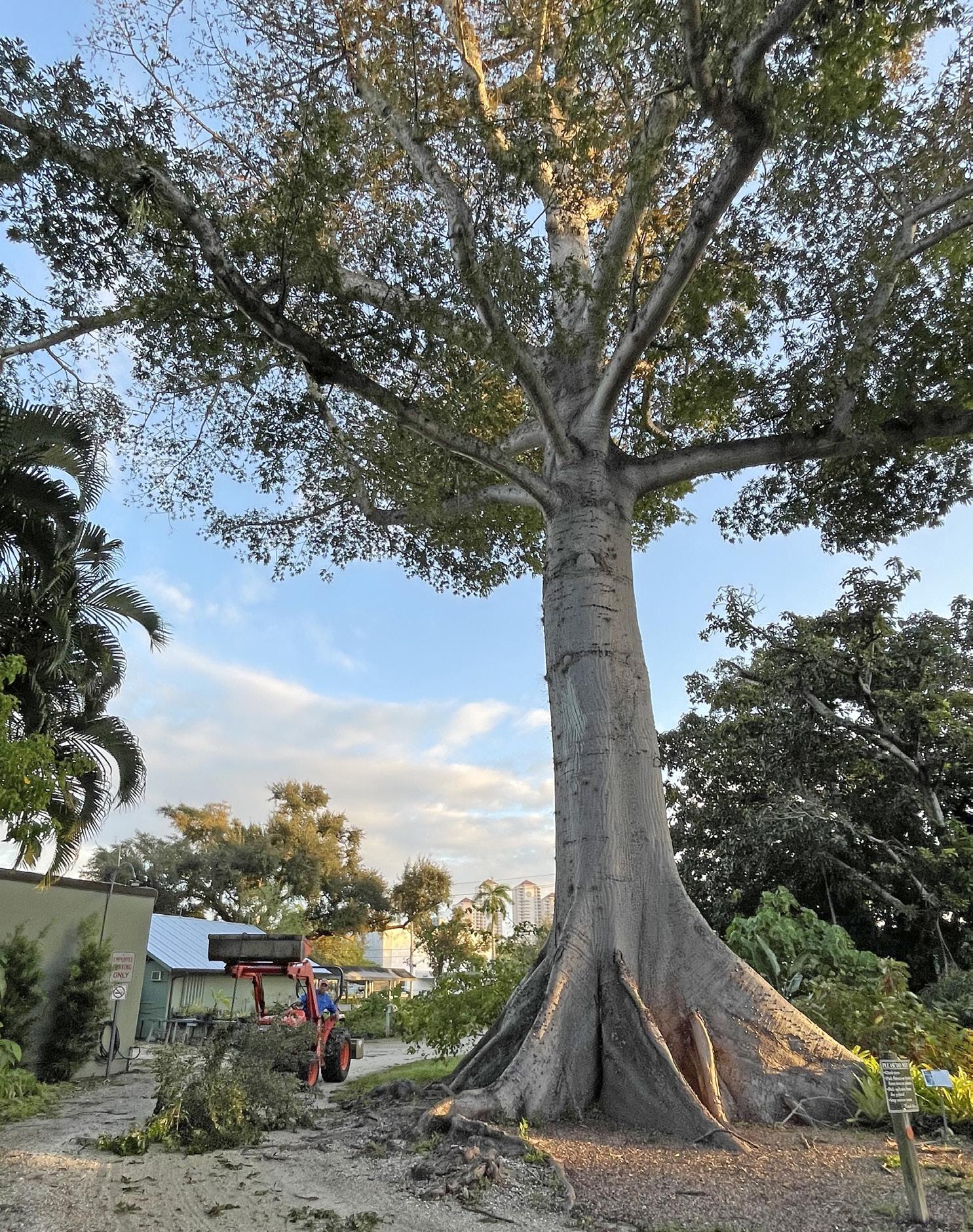
THE MAJESTIC KAPOK IS THE LARGEST TREE IN SOUTH AMERICA AND AFRICA. VISITORS CAN SEE THIS TREE AT EDISON AND FORD WINTER ESTATES.


meaning silk and this silk allows both Ceiba and Bombax seeds to travel more than 50 miles in wind.
In Java, the Kapok is an important agronomic commodity due to its fast growth, becoming productive within six years. Known to grow more than a foot a year during its first few years, the tree is documented to reach heights of more than 200 feet in its native habitat. Kapoks require excessive amounts of water during their young growth years.
I happened to be present one day, when a malfunctioning waterline was uncovered, quite close to the base of the Kapok – it is possible that our gorgeous king of the forest had the benefit of an unrestricted water supply for many years, promoting its enormous growth. We’ll never know for sure. As it matures, the Kapok becomes deciduous during the winter, a survival tactic when water is scarce, to be followed by spring flowering and maybe seedpod production. The Kapok seeds consist of about 25% oil, similar to cottonseed oil; after extraction it is used in cooking, soapmaking and for lubricants. The plush “floss” was once used to make mattresses, and more importantly life jackets, due to its light weight and buoyancy; however, once the flammability factor was discovered, its use was discontinued for life jackets.
In addition to its massive buttress root systems, the tree, and its cousins, are instantly recognized for the sharp points
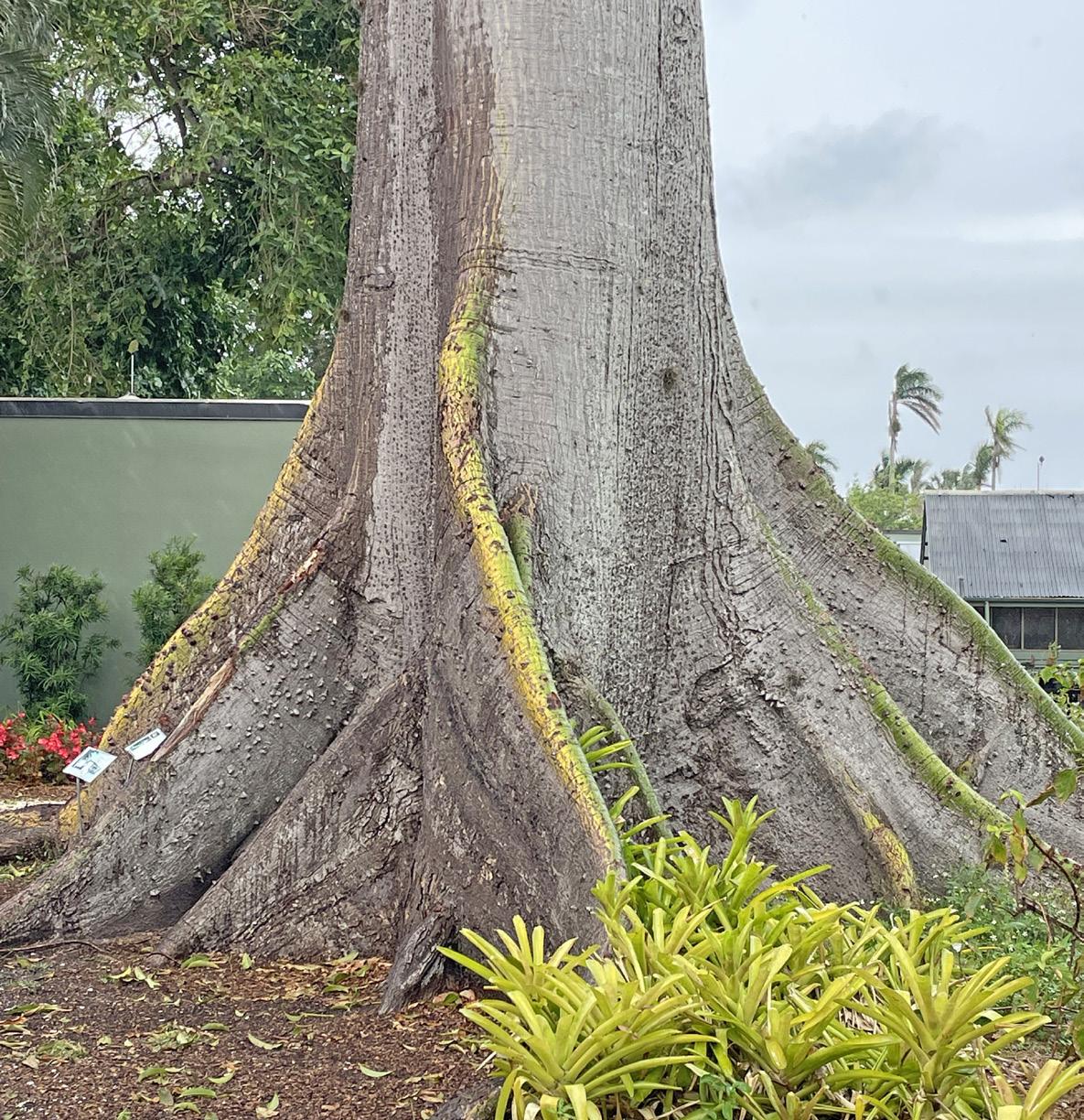

VISITORS TO EDISON AND FORD WINTER ESTATES ENJOY USING THE LARGE, BUTTRESS ROOTS OF THE KAPOK AS A BACKDROP WHEN TAKING PHOTOS.
that grow lower on the trunk, presumably to deter herbivores that would enjoy its tasty leaves. Similar to our collection of Bombax trees, the spines are very dominant on young trunks and disappear from the trunk as the trees age and gain stature.
Another identification trait of the Kapok or Ceiba species is its flattened crown – its few branches appear high on its trunk and open across a horizontal plane. I have been photographing this tree over the years and have included some dramatic pre- and post-hurricane photos. When Ian knocked large pieces of branches down, we found that they too, were covered in the same sharp spines seen lower on the Kapok trunk. It is believed that the architecture of the tree helps it secure the most amount of sunlight, with branches that only grow above the dense rainforest canopy. The smooth thin bark of the Kapok discourages attachment of any vine that may threaten the tree, and so we should be incredibly careful to protect the delicate bark on the trunk and roots to prevent entrance of disease or rot to this magnificent specimen.
The large leaves are coated with a waxy finish to minimize transpiration during the hottest days and the large surface area of those leaves allow the Kapok to take full advantage of fog or humidity for water intake.
Sometime in late spring, the Kapok should begin to flower. Our tree is so tall now that it would be difficult to get a good close view of the flowers, though one bloom did fall into the driveway, and I was able to photograph it. It is written that the flowers emit a pungent odor to attract its primary
pollinator, a bat, to its offerings. Scientists have discovered in Kapok, an ability to convert from a fully self-incompatible flowering tree when pollinators are abundant, to a high level of selfpollination when pollinators are scarce.
While the Kapok may also be pollinated by moths, it is believed that bats are much more efficient in the process.


Included in today’s article is an opensourced photo from Research Gate where the photographer used white light to capture the Artibeus bat of Jamaica and one can clearly see the bat’s body covered in yellow pollen. According to the Florida Bat Conservancy, this particular bat has been spotted on very infrequent occasions in South Florida; but it does make me wonder how someone would know if they’re visiting the top of our Kapok under the cover of darkness? Or are moths and bees pollinating it?
A close relative is the Floss Silk Tree ( Ceiba speciosa ), which many readers will recognize as the showy tree covered in pink blossoms in mid-autumn, typically around late October. A gorgeous specimen adjacent to the Garden Council building in the Berne Davis Garden was lost during Hurricane Ian . Some materials refer to this tree also as Kapok because their trunks are similar and the seedpods are quite similar, but the Ceiba speciosa only grows to about half the height of a fully grown C. pentandra . The beautiful Floss Silk (sometimes also called Silk Floss – either way is acceptable) was inventoried on our historic property during the 1930s garden tours.
My research into where our Kapok ranks with others in the United States turned up some interesting results. On the site “Monumental Trees,” the Edison Ford’s Kapok photographs are the most
frequently viewed of U.S. Kapoks. The last posted measurements were in 2015, where the circumference or girth was indicated as “greater than 4 meters” and the “height unknown.” We hope to update those records in the coming weeks. While clearly not the largest in the world – that record seems to belong to a Ceiba pentandra in Costa Rica that has a recorded height of 198 feet. Perhaps there is a new place in the record books for our Kapok.



The list of proactive security measures that can be taken to protect your home and/or business is lengthy. Some are more effective than others.
Surprisingly, few of these measures are more effective than efficient lighting.
Bright lights deter criminal activity. Thieves, burglars and vandals search for low-risk targets … locations at which their movements and methods are easily concealed.
Many security experts agree that lighting is the most cost-effective and efficient way to protect your property.
Decisions must be made, following careful consideration, regarding the type of lighting, how it is activated (full-time, motion-activated, timeractivated), height and location.
Lighting positioned too high will diffuse the light and be less effective. Conversely, lighting placed at lower heights will greatly reduce the area of coverage.
Lighting used in conjunction with a video security system, if positioned correctly, will greatly enhance the quality of the captured video.
To begin, observe your home or business from the exterior, as if you were a prospective intruder. Where
would you seek entry? What entry point appears to be easiest to penetrate? Where would your activity be unseen?
Now, go indoors looking outward. Where would you need lighting in order to best see movement? What darkened areas seem most vulnerable?
Following this exercise, you will likely be prepared to select lighting locations.
It is also important to be mindful of your neighbors and the glare of your lighting. Ensure that your lighting does not adversely affect those living next door or nearby.
Consider motion lighting. When motion is detected and the light comes on, your vigilance generally increases.
Speak with lighting experts regarding the use of solar-powered lighting. Solarpowered lighting continues to work when the power grid is down and is easily wired.
In addition to preventing and hindering illegal actions, well-lit areas allow first responders … law enforcement, fire and ambulatory services … to respond more efficiently.
The Montage Women’s Club is a social and philanthropic club open to all women residing in Lee County. We normally meet on the fourth Thursday of each month. Our May meeting will take place at the Hilton Garden Inn (Captiva Ballroom), 12600 University Drive, Fort Myers 33908, corner of College Parkway at the Summerlin Road overpass. Meetings begin at 11:30 a.m. with a short social period, followed by lunch at noon, followed by an informative speaker program and a short business meeting. Within the organization are various interest groups for members’ participation. Membership is open to both year-round and seasonal residents. We welcome you to visit Montage for a luncheon.
Our next meeting will be held on Thursday, May 22. Our speaker will be Adrienne Diaz, a Lee

County Master Gardener and a Certified Square Foot Garden instructor. Square foot gardening is the practice of using a small space and a little elbow grease to achieve great gardening success. Adrienne will inform us about plants that thrive in our climate and how they can grow, even in small areas, as a beautiful addition to your balcony, lanai or garden.
Luncheon fee will be $30 per person, and you always have a choice of either a regular menu entree and/or a vegan plant-based entree.
If you would like to attend a Montage meeting, need further information, or would like to make a reservation, please call Rita Artwohl at (239) 703-7787. Reservations cutoff to attend this meeting is noon, Thursday, May 15.
